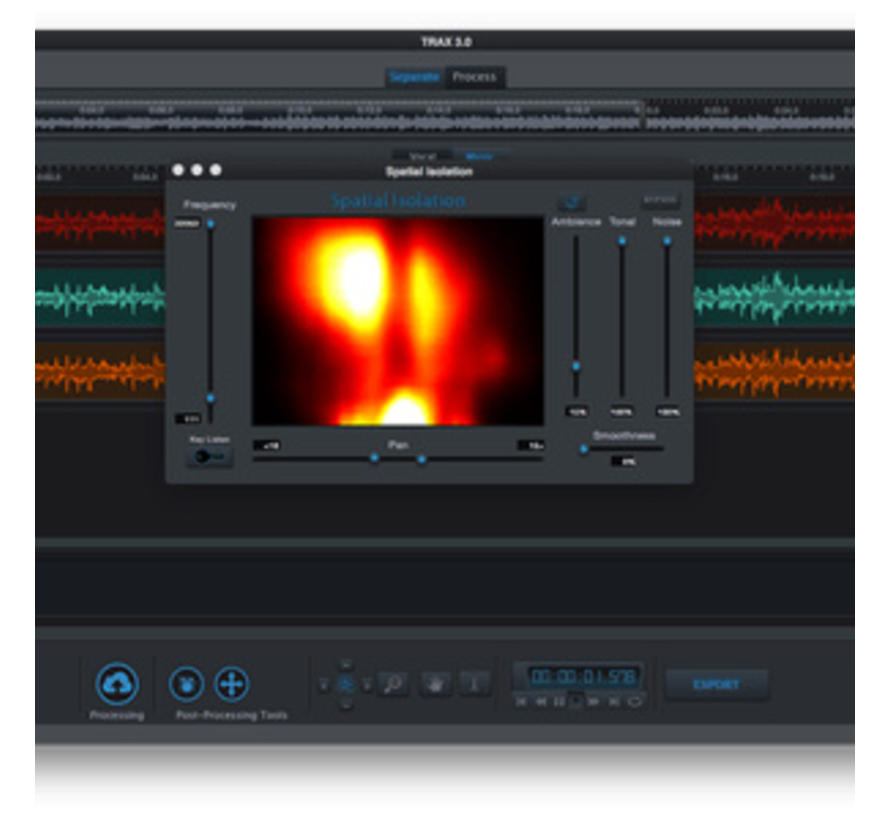

Instead, they're accompanied by a three-way Separation Balance control that allows you to retrospectively alter the separation weighting. XTRAX Stems 2 is different, because the stems it produces aren't static and immutable.
#Audionamix adx trax pro software#
With other source separation software I've tried, every new iteration of the separation settings requires another trip down Internet alley and an ensuing wait, meaning that the limiting factor on quality is often the patience of the user. The actual separation process has been sped up significantly since version 1, but still takes a minute or two for a typical three-minute track. By default, XTRAX Stems will then immediately analyse it using whatever algorithm you've chosen as the default, though this behaviour can be altered. To initiate a separation, you simply drag and drop an audio file in one of the many supported formats. Most importantly, however, all three algorithms now offer a significantly greater degree of user control.Īs before, the actual separation is handled by a remote server, so you need a fast-ish Internet connection to use XTRAX Stems 2. XTRAX Stems 2 drops the standard Generic and Automatic algorithms, leaving only the 'high‑quality' versions, but adds a third algorithm called Advanced. The original featured two separation algorithms, each available in a standard and an 'HQ' variant. It's still a stand-alone program, but is now available for Windows 7 and Windows 10 as well as on Mac OS.
#Audionamix adx trax pro update#
And whereas XTRAX Stems faced little competition at launch, it now has to contend with the excellent DeMIX Pro from AudioSourceRE, which can operate at the preset level and also as a more advanced, controllable package somewhat along the lines of TRAX Pro.īut Audionamix aren't resting on their laurels, and they have quickly moved to update XTRAX Stems to version 2. The initial version was undeniably impressive, and eminently usable for subtly rebalancing a mix where the vocal level wasn't quite right but, inevitably, the results of a couple of mouse-clicks didn't really compare with what you'd get from several hours' work in the full-fat TRAX Pro, and the stems were rarely usable in isolation. XTRAX Stems provided simple and entirely automated separation of mixed audio tracks into vocal, drums and 'music' stems. On TRAXīack in March 2018, I reviewed Audionamix's first attempt to repackage their technology in an immediate, preset-based environment.

At present, though, that goal is most closely approached through extensive human hand-holding in complex packages like Audionamix's ADX TRAX Pro 3 SP, which allows the user to painstakingly guide the computer through the process of identifying and separating vocal parts. The ultimate goal is a system that can take in a mixed music track and spit out two or more clean stems comprising vocals, drums, guitars and so on. Source separation is one of those fields where this can be a real issue.

Alternatively, machine learning can internalise some of that expertise, but risks creating a system that is hard to control because not even the developers know what's really going on under the hood. If you expose every parameter in a sophisticated system for user control, then getting the best results requires a level of expertise that few users will ever attain. Limits on the power of digital signal processing sometimes have less to do with the processing itself, and more with our ability to use it. Audionamix are aiming to make the process of vocal extraction not only better, but quicker.


 0 kommentar(er)
0 kommentar(er)
